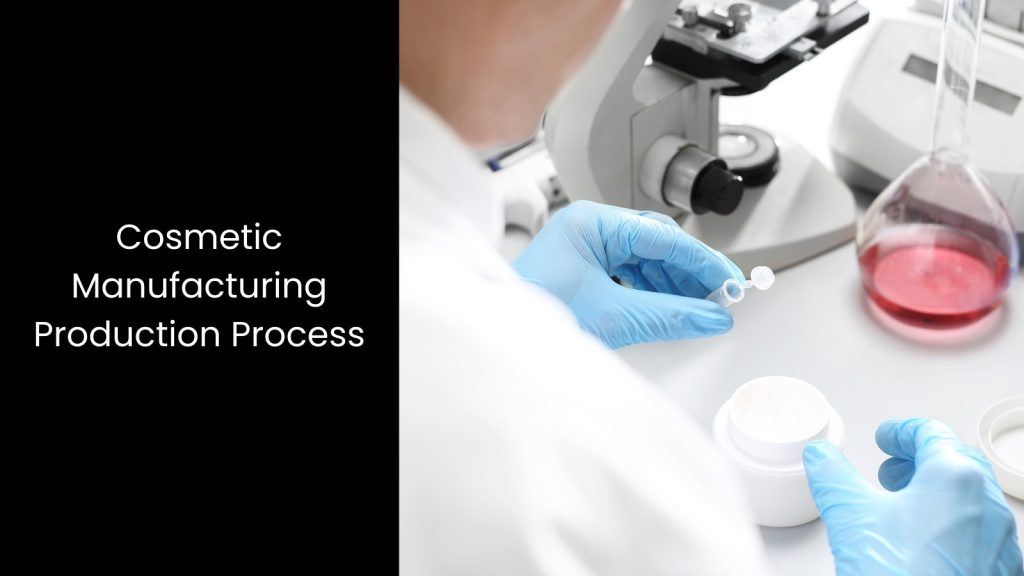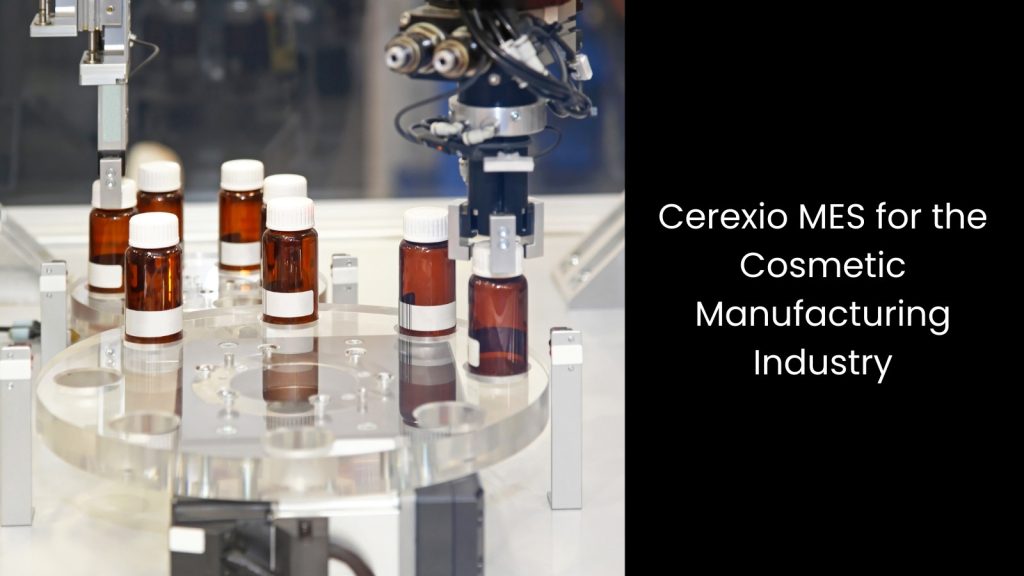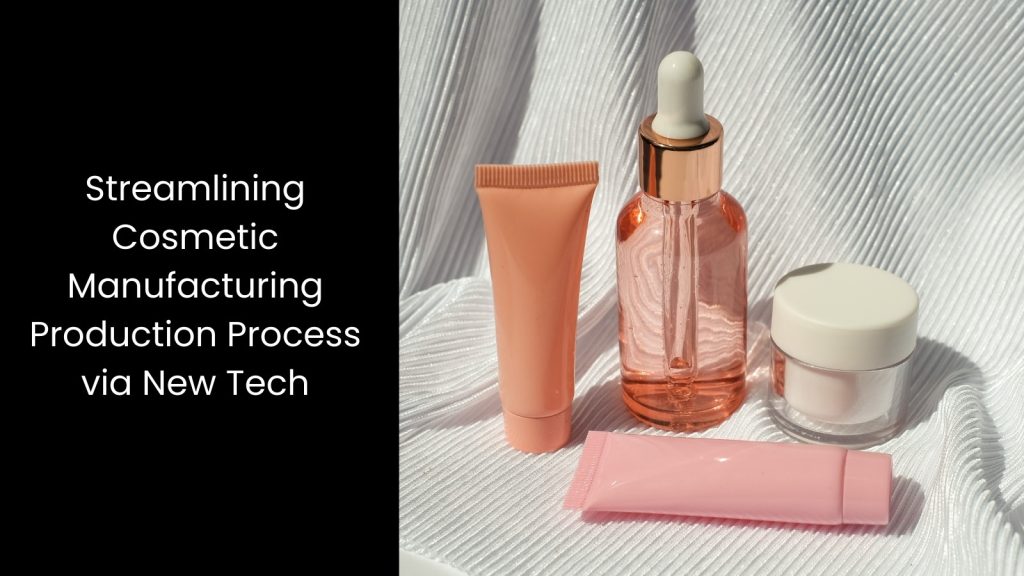Did you know the global cosmetic manufacturing industry will reach over $800 billion by 2025? With this massive growth, manufacturers face the challenge of producing high-quality, innovative products that meet consumer demands. But how exactly do these products come to life? It is certainly not just about blending ingredients and packaging. The cosmetic manufacturing production process is a dynamic journey that combines science, technology, and creativity. From formulating the perfect skincare solution to ensuring product safety and stability, every step requires precision and expertise.
In this blog, we will look into the cosmetic manufacturing production process.
We will understand
Cosmetic Manufacturing Production Process

Stage 1: Research and Development (R&D)
As you know, every product and its design has to go through this phase. Actually, it would be correct if we said this is the stage where the original product design is born.
So, yes, the very first stage of cosmetic manufacturing starts with research and development, where experts create innovative products tailored to customer needs.
Formulation development drives this process, focusing on aligning with market trends and meeting strict regulatory requirements. It is the responsibility of the scientists to carefully test the stability and compatibility of ingredients to ensure they work together well and deliver safe, effective results.
Then, the manufacturing teams produce trial batches to refine the formula, ensuring it achieves the desired texture, performance, and shelf life. This stage involves analysing consumer demands, using advanced testing methods, and complying with industry standards.
As you can see, by perfecting the formulation, companies lay a solid foundation for delivering high-quality cosmetic products that stand out in a competitive market.
Stage 2: Material Sourcing and Preparation
The next step is the most complex layer of the entire process, as material sourcing and preparation demand precision and care in cosmetic manufacturing production. How can this be done in the first place? Let us explain.
Manufacturing teams focus on procuring high-quality raw materials from trusted suppliers to guarantee safety and effectiveness. This is where the experts rigorously inspect and test these materials to ensure compliance with strict quality standards and avoid contamination.
They also pre-treat certain ingredients, like melting waxes or hydrating powders, to optimise their performance in the formulation. This stage is vital in ensuring the final product meets industry expectations for texture, stability, and effectiveness.
When they prioritise thorough preparation, manufacturers maintain the integrity of professional-grade cosmetic formulations and customer trust.
Stage 3: Emulsification and Mixing
There comes the essential emulsification and mixing stage in cosmetic manufacturing, where everything starts to take shape.
This is how it occurs: Experts combine water-based and oil-based phases using advanced equipment like homogenisers to ensure smooth blending. This process creates a stable mixture, which is crucial for high-quality products.
During this stage, manufacturing teams carefully add active ingredients, fragrances, and preservatives to enhance functionality, scent, and longevity. The right balance and timing during mixing play a critical role in achieving the desired texture and performance. This lays the basis for producing colourful and eye-catching cosmetics that quickly grab the attention of consumers around the world.
It is visible that this step demands precision and expertise to create products that stand out in the competitive cosmetics market while meeting stringent quality standards and maintaining consumer trust.
Stage 4: Quality Control (In-Process Testing)
When it comes to cosmetic manufacturing, quality is everything. This means that it makes the quality control stage a critical checkpoint.
Manufacturing experts must monitor key parameters like viscosity, pH, and consistency throughout production to ensure the formula meets precise standards. They use specialised tools to confirm that the texture feels right and the product remains stable over time. Teams also perform rigorous microbiological and contamination checks to eliminate harmful pathogens and ensure safety.
This process guarantees that every batch aligns with industry standards and customer expectations. Since they maintain strict oversight during this stage, manufacturers have the ability to uphold the integrity of their cosmetic products. This ensures they deliver exceptional performance, reliability, and compliance with regulatory requirements.
Stage 5: Post-Mixing Processing
The reason this stage is required is because of the need to perfect the formula and ensure it meets cosmetic manufacturing standards.
In post-mixing processing, cosmetic manufacturers filter the mixture to remove any impurities or unwanted particles that could affect the product’s quality. This step ensures the final product is smooth and free from defects.
After filtration, experts refine and cool the mixture to stabilise it, making sure it holds its form over time.
They also adjust the texture, colour, or fragrance as needed to ensure the product is both functional and appealing to customers. This stage is essential as it guarantees a high-quality, consistent final product ready for packaging and distribution.
Stage 6: Filling and Packaging
The production flow is almost completed as we enter into the filling and packaging stage of cosmetic manufacturing.
First, the finished product gets carefully filled into containers like jars, tubes, or bottles, ensuring accurate amounts are placed in each package. This is where the teams primarily focus on proper sealing to prevent leakage or contamination and maintain the product’s quality. You know that the manufacturing quality standards put a tight grid for packaging, especially when it comes to cosmetic productions.
Packaging also includes labelling, where branding and regulatory information are added to ensure the product complies with industry standards and is easily recognisable by consumers.
After filling and sealing, quality inspections take place to check for correct fill levels, proper sealing, and visual appeal. This stage ensures every product looks appealing, works effectively, and is ready for consumers to enjoy.
Stage 7: Final Quality Assurance
The next stage is final quality assurance, a non-avoidable step in cosmetic manufacturing to ensure every product meets safety and performance standards.
It is a massive part of this process to conduct rigorous tests like skin irritation tests, stability tests, and microbiological screenings to guarantee the product is safe and effective for consumers. They also evaluate the formula’s shelf life, ensuring it remains stable over time.
Compliance with both local and international cosmetic regulations is verified, ensuring the product meets legal requirements in various markets. Testing also includes checking the texture, fragrance, and overall feel to ensure consistency and customer satisfaction. This stage ‘re-confirms’ that the product is ready to be distributed, ensuring its safety, efficacy, and quality.
Stage 8: Storage and Distribution
The last step is storage and distribution, and it is a vital phase in cosmetic manufacturing that ensures products reach consumers in top condition.
After production, products are stored in controlled environments, such as temperature-regulated warehouses, to maintain quality and prevent degradation. This ensures the products stay stable and effective until they reach the market.
Once the products are ready for shipment, teams distribute them to retailers, wholesalers, or directly to consumers through various channels, ensuring broad availability. This is where cosmetic manufacturers have to pay close attention to efficient logistics and careful handling to maintain the integrity of the product during transport.
If correctly done, this will ensure that high-quality cosmetic products are delivered safely and consistently to customers, completing the manufacturing process.
Cerexio MES for the Cosmetic Manufacturing Industry

Cerexio offers a powerful MES solution that supports the cosmetic manufacturing industry through Industry 4.0 technologies, enhancing automation, real-time data exchange, and process optimisation. Since our solution integrates AI, IoT, and digital twin capabilities, cosmetic manufacturers can employ it to improve production efficiency, quality control, and predictive maintenance. Cerexio MES is ideal for seamless monitoring, faster decision-making, and enhanced traceability, ensuring high-quality products and streamlined manufacturing operations.
Streamlining Cosmetic Manufacturing Production Process via New Tech

Since you have read this whole article, you know that adopting the right technology for cosmetic manufacturing can be the most pathbreaking step you can ever take. With so many options available, it is essential to choose tools that align with your business goals. The right tech will boost productivity, ensure quality, and help you stay competitive in an ever-changing market.
